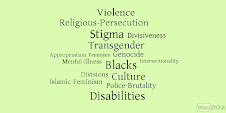I should start by admitting that although I lead a criminal justice reform agency, I am neither a lawyer nor a criminologist. I'm just a guy. I graduated from college with vague aspirations to do good in the world. I spent the early part of my career working for a series of non-profit organizations in Washington DC. My big break (as it were) came in 1992 when I moved to New York to be a Coro Fellow.
As part of the fellowship, I spent a month as an intern, working for John Feinblatt who was in the process of planning the Midtown Community Court. As part of this experience, I spent several weeks interviewing misdemeanor defendants in the Midtown North and Midtown South holding cells in an effort to get a handle on their social service needs. I also spent a week sitting on the bench with a judge at 100 Centre Street in Manhattan's criminal court. I found this experience eye-opening, to say the least.
Like a lot of non-lawyers, my thoughts about court were formed by my grade school civics lessons, books like To Kill A Mockingbird and popular entertainments such as Hill Street Blues. I expected to see serious, felony cases, intense trials, eloquent battles between defense attorneys and prosecutors. As I came to find out, all of these things are rarities in urban courts. The vast majority of the cases, even in the early 90s, were misdemeanors, not felonies. Less than one percent of the cases went to trial -- most were disposed of at arraignment via brokered agreements between prosecutors and defenders.
I think it is safe to say that the defendants who appeared in court that week back in 1992 were not criminal masterminds. By and large they were individuals who were down on their luck. Many seemed to be homeless or drug-addled. If I had to guess, I'd also say that many were unemployed and undereducated.
I could go on and on, but I'll try to sum up. The bottom line is that this was a life-changing experience for me. I left my time in the holding cells and on the bench with a firm conviction that there was a significant gap between the stated and performed values of the criminal justice system -- what the criminal justice system says it does is very different from what it actually does. This struck me then, and it strikes me now, as fertile grounds for reform.
I'd argue that this is where the movement toward what I call problem-solving justice begins: with a frank assessment of the justice system. Notwithstanding the reductions in crime over the past 20 years or so, I think most reasonable people would agree that we still have a long way to go before we have a criminal justice system that lives up to its highest ideals either in terms of fairness or effectiveness.
Problem-solving courts, like any reform effort, have attracted a fair amount of criticism. Interestingly, in the early days, the primary critics were law-and-order types who accused these new courts (particularly drug courts) of being soft on crime since they emphasized alternatives to incarceration. In recent days, the primary critics have come from academia and from the defense bar, many of whom raise fears about net-widening, coercion and paternalism.
Needless to say, I'm not an unbiased observer so feel free to take my thoughts here with a grain of salt. But as a thought experiment, let's give in to the critics and imagine a world in which there were no problem-solving courts. What would be different? Would the adjudicatory process be any less paternalistic? Would there be more trials? Would the life trajectories of defendants be any better? I think the answer to all of these questions is a resounding no.
I won't bore you with chapter and verse, but I think there is good evidence to suggest that problem-solving courts, if implemented correctly, have the potential to improve both court outcomes (changing the behavior of offenders, improving public safety) and court process (improving both efficiency and perceptions of fairness).
At the end of the day, what I like best about problem-solving courts -- and what I think accounts for their popularity across a broad political spectrum -- is that like a Reese's peanut butter cup, they bring together the best of two worlds. They incorporate the wisdom of both the broken windows theory and the movement to reduce our over-reliance on incarceration. Problem-solving courts, and drug courts and community courts in particular, are an effort to ensure that all criminal behavior receives some sort of response while not using jail and prison as a default setting.
Hmmm....I seem to have gone on a bit longer than I intended to. I apologize for the length of this self-serving missive. Let me just close by wishing you well, encouraging you to challenge/question me, and congratulating John Jay and Vera on this wonderful experiment.
Greg
